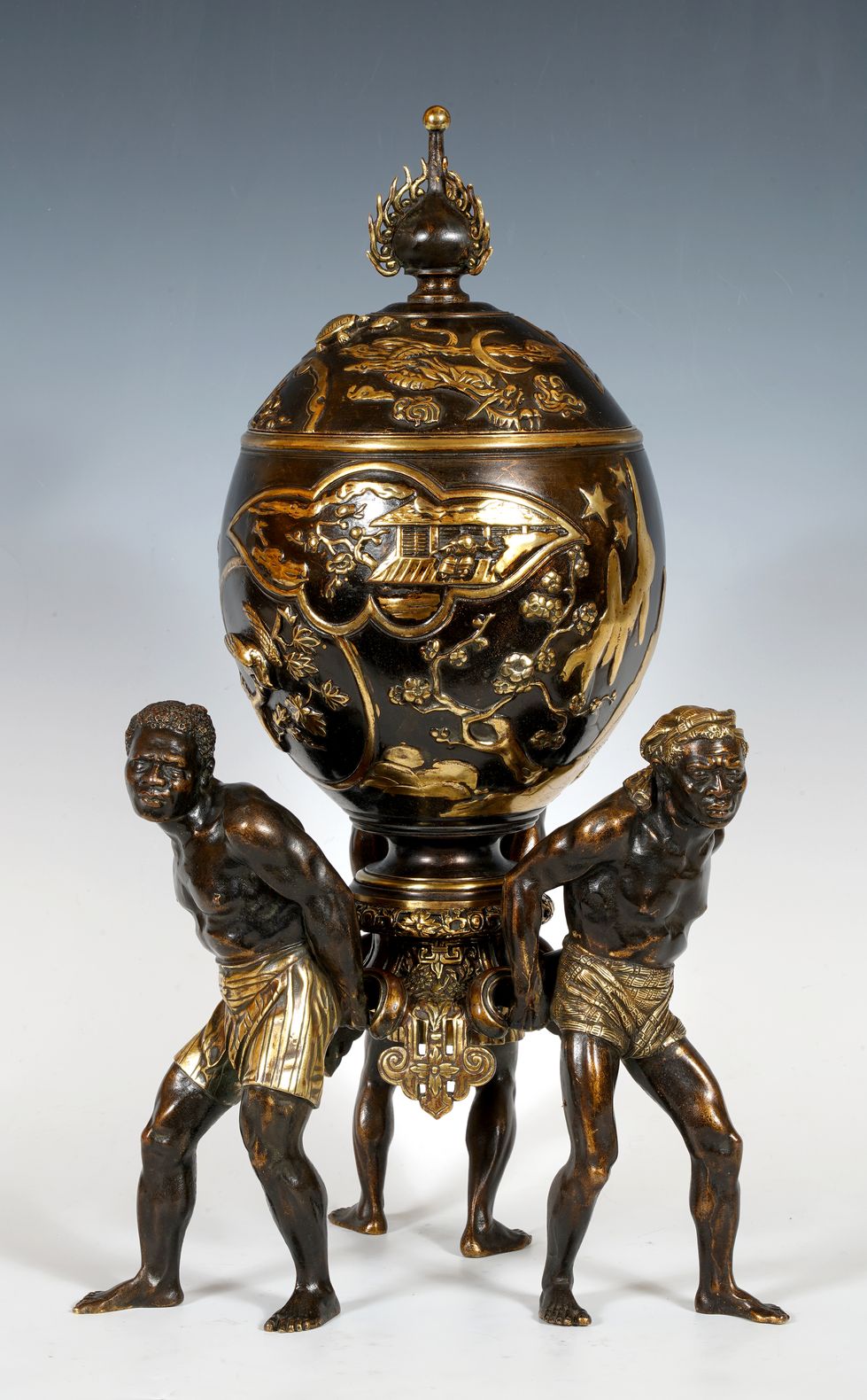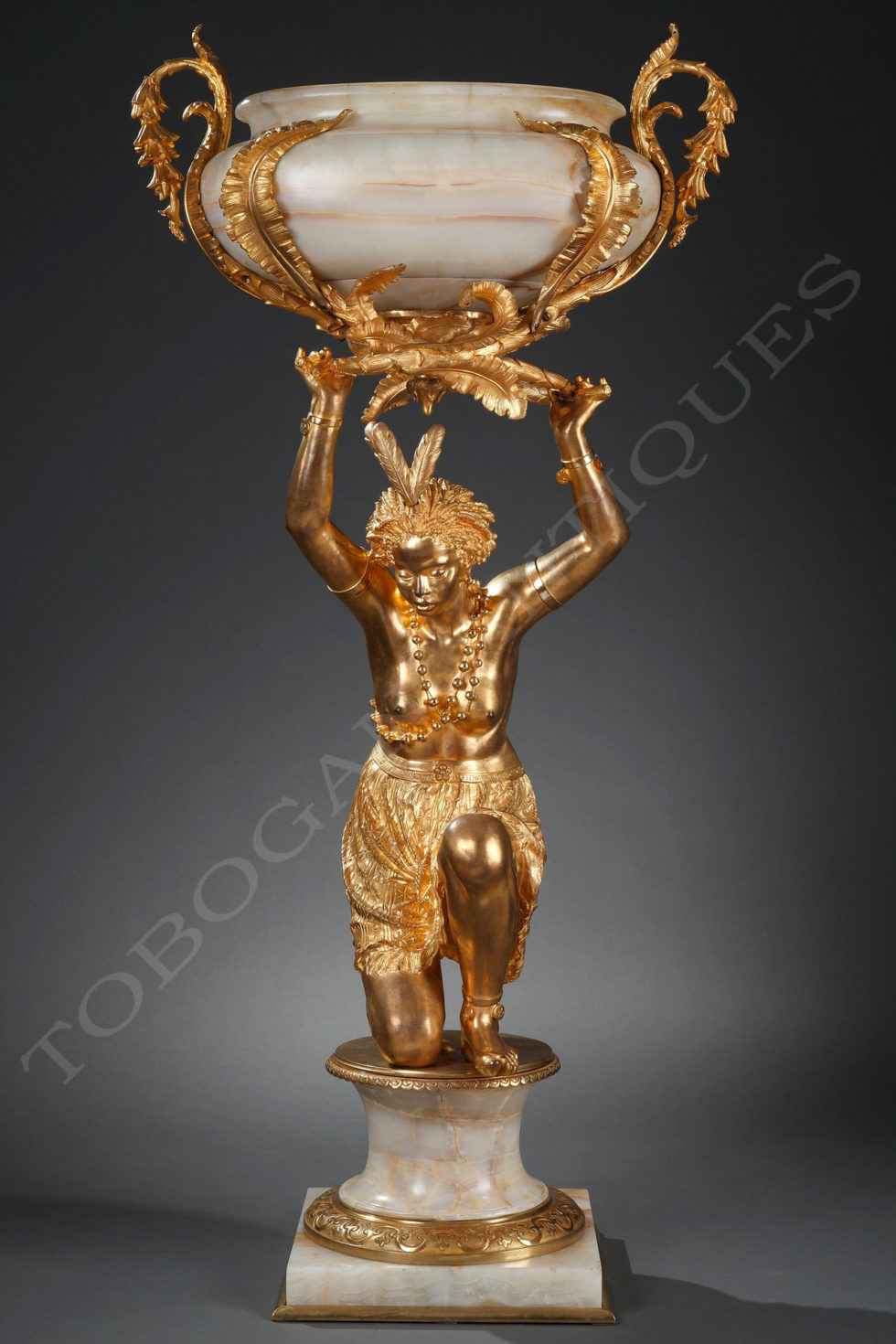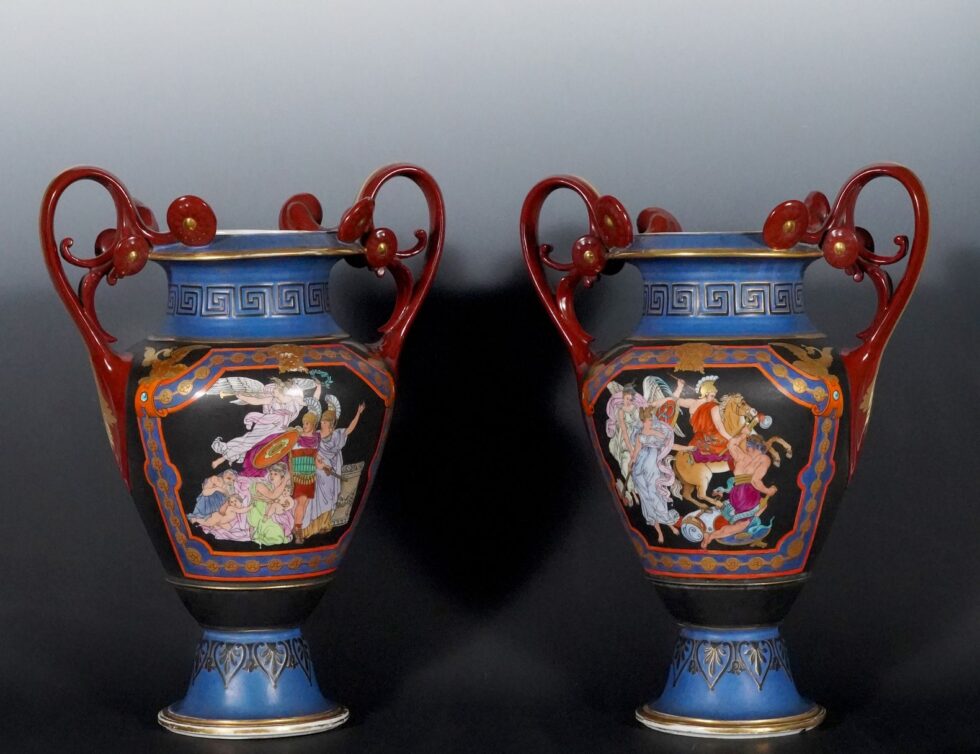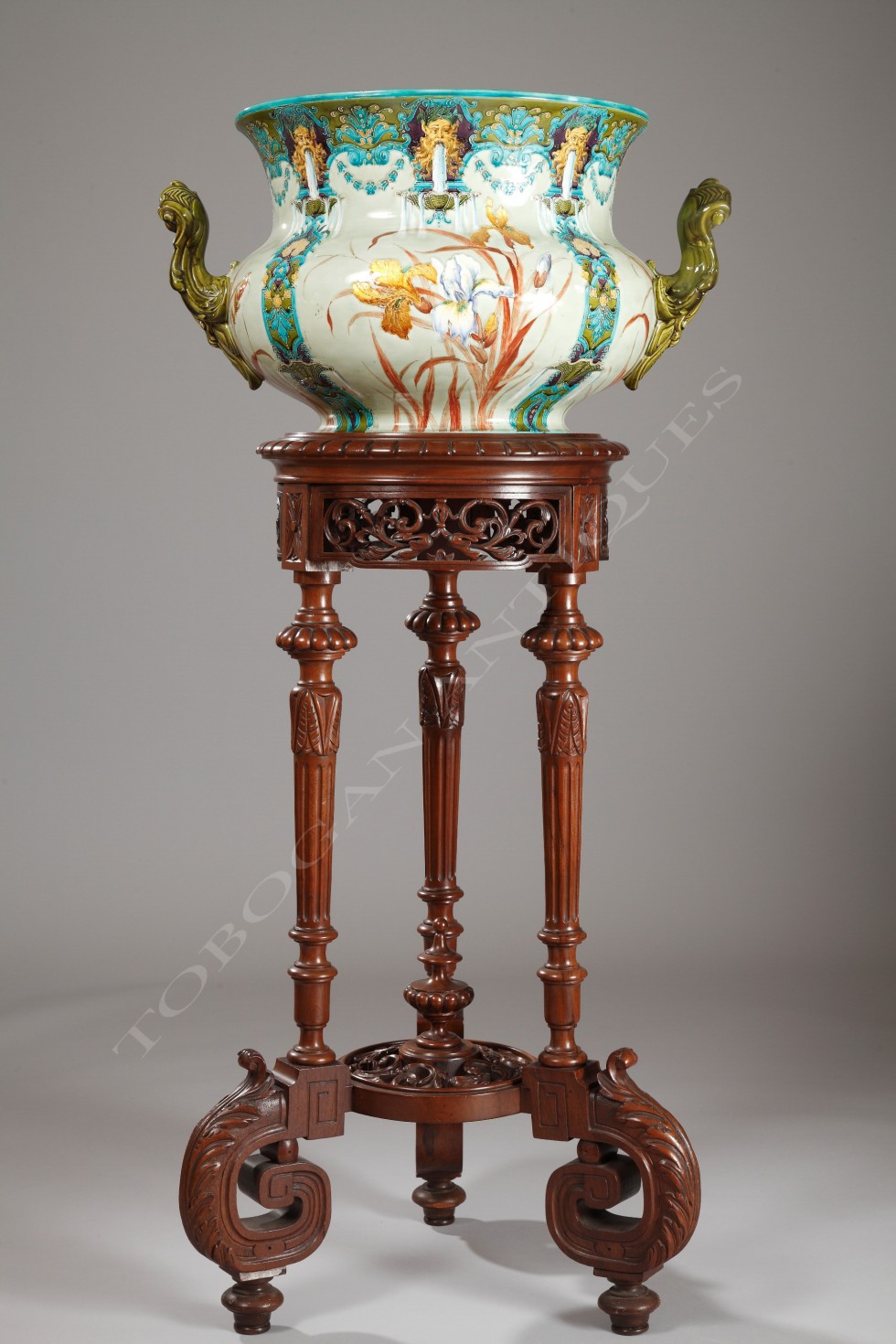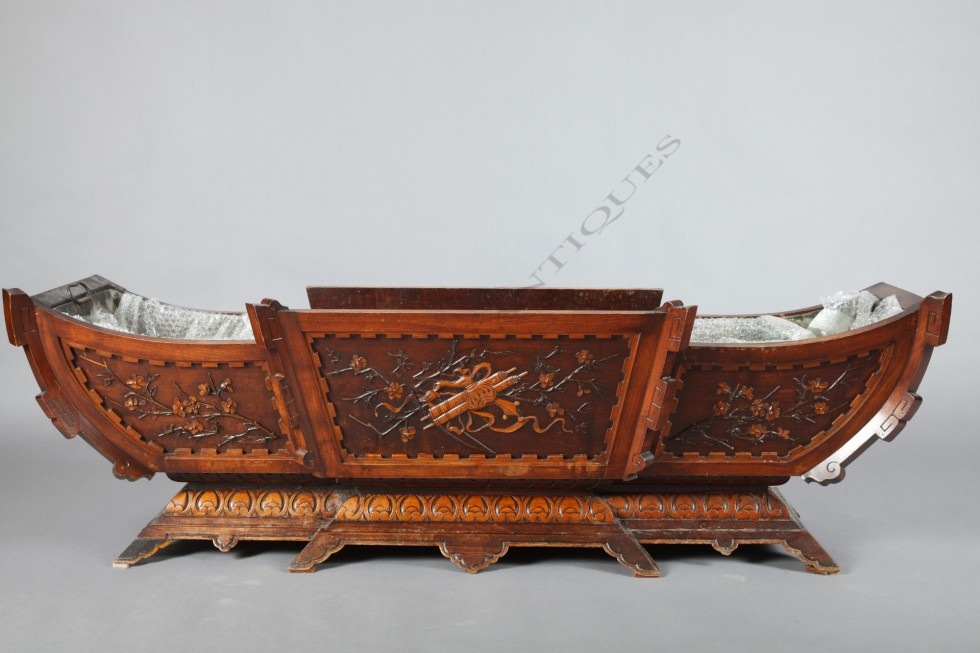Ref. 1850
A. Giroux
Designer and Art object Editor
(Active from 1799 to 1885)
(Attributed to)
Covered vase with Atlantes
France
Circa 1880
Bronze
Height : 47 cm (18,5 in.) ; Width : 25 cm (9,8 in.) ; Depth : 22,5 cm (8,8 in.)
Beautiful ovoid-shaped covered vase in patinated bronze with golden highlights, with rich rotating decoration in relief. The lid, symbolizing Night, is decorated with a turtle, a moon, a dragon flying among the clouds ; and the belly, symbolizing the Day, is decorated with a rising sun, mountainous landscapes, and cherry tree branches.
The whole, topped with a flamed seed, is supported by three African-type atlantes dressed in a loincloth.
historical and artistic context
This work of art combines elements of Japonism and Orientalism, two important movements representative of the taste of the time for exoticism. Indeed, this taste for Chinoiserie was revived at the end of the 19th century following the Franco-English military campaign against the imperial army in China in 1860. Napoleon III’s French troops bring back part of the treasure from the Summer Palace, constituting in 1863 the famous Chinese Museum of Empress Eugénie at the Palace of Fontainebleau. First in painting, the movement quickly spread to decorative arts and furniture.
This craze for the Far East is encouraged in France by the diffusion of Chinese ornamental works renewing the interior decoration of the luxurious Parisian residences of a clientele eager for something new.
It was also under the Second Empire that the Orientalists were propelled to the forefront. Emperor Napoleon III, aristocrats as well as wealthy bourgeois in search of exoticism fill the order books of the most renowned artists. It is then not the predominantly academic style of the Orientalists that counts but above all the exoticism that they show to a fascinated public.
biography
Alphonse Giroux and Company, famous curiosity and luxury goods shop was situated in Paris, at No. 7 rue du Coq-Saint-Honoré and in business from the time of the Consulate until the end of the Second Empire. The company was founded by Francois-Simon-Alphonse and continued in 1838 by his two sons, Alphonse-Gustave (1810-1886) and André (1801-1879). The father became a close associate of the royal family and specialized in the manufacture of refined items for gifts. Kings Louis XVIII and then Charles X were both supplied with gifts for « The Children of France » by Giroux. Making progressively small furniture, they were mentionned for the first time in 1837 in the class « cabinet-makers » in the Paris Almanach. It was Alphonse-Gustave, however, who really expanded the activities of the firm as is testified by the report of the jury at the 1839 Products of Industry Exhibition awarding him another silver medal. Alphonse was also quick to participate in the famous and soon figured among the best in the luxury goods business. After buying a writing desk at the 1855 Universal Exhibition Napoleon IIIrd bought several other pieces of furniture, candelabras and clocks from Giroux for the Compiègne Palace. In 1857 Alphonse Giroux transferred his shop to No. 43, boulevard des Capucines where he continued to do business until 1867, when he ceded the company to Duvinage and Harinkouck.
Contact us
Tobogan Newsletter
If you want to be up-to-date with our new acquirings you can sign up to our newsletter.

